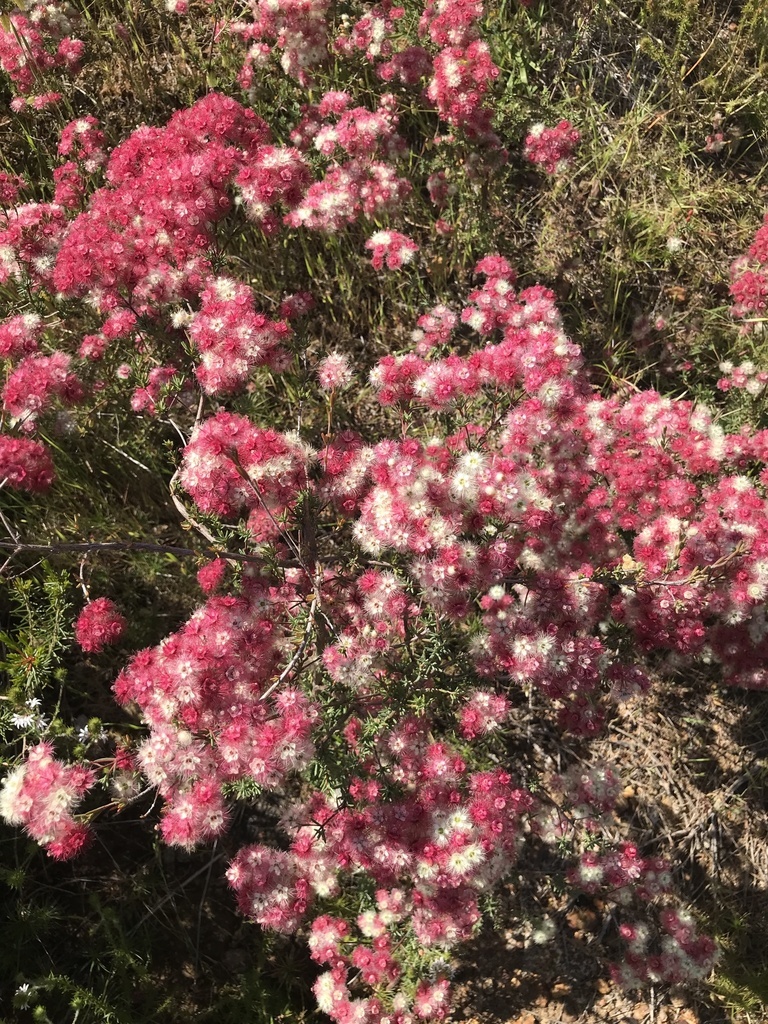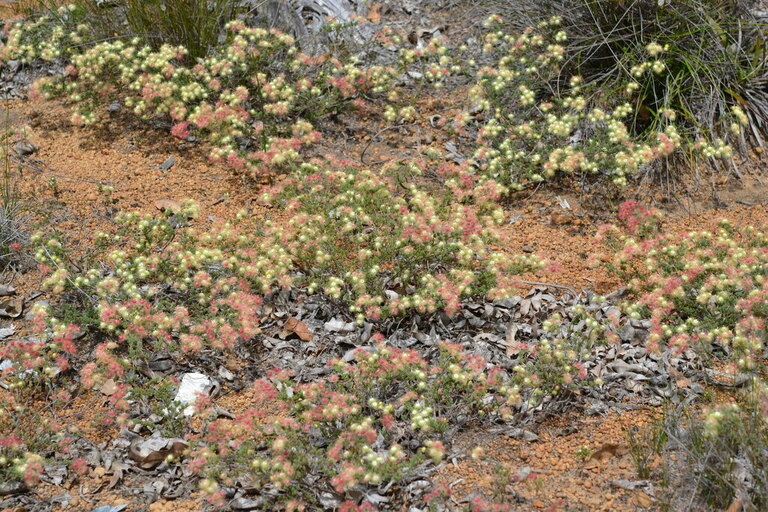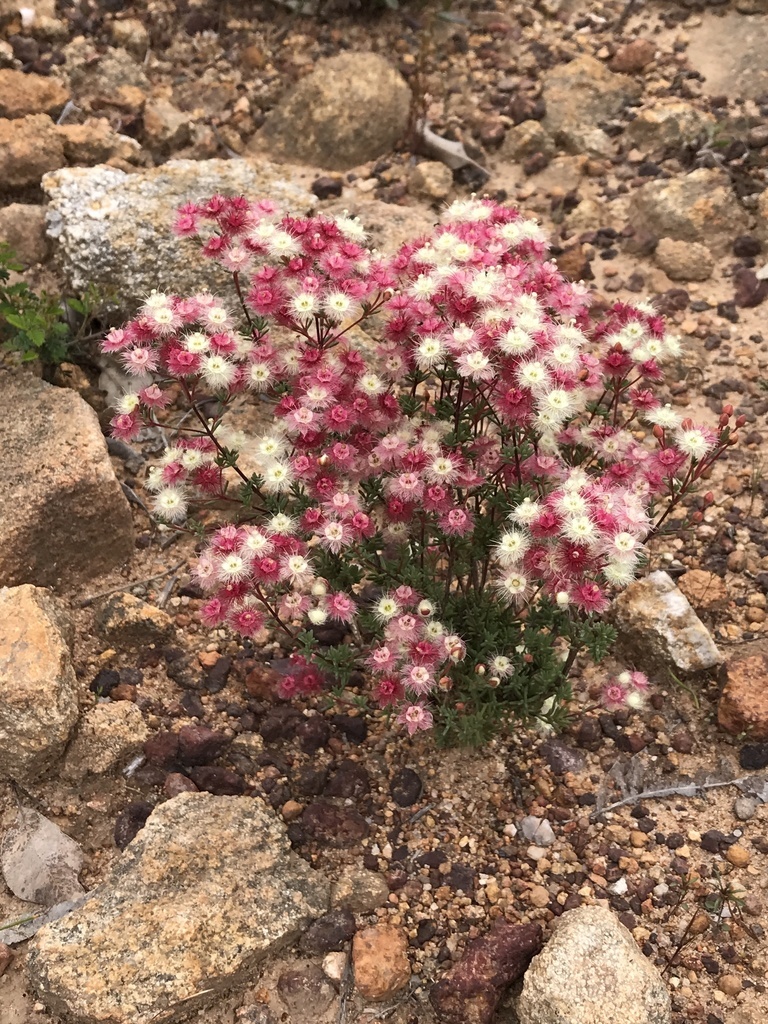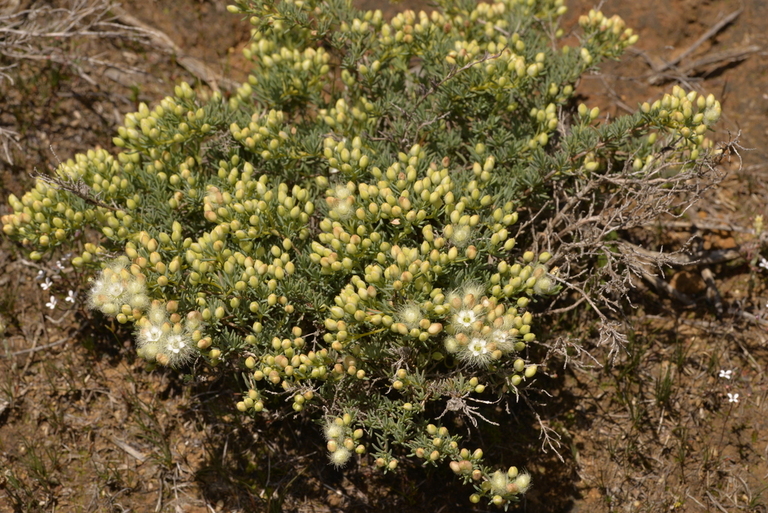Verticordia huegelii, commonly known as the Spotted Featherflower, is a captivating wildflower native to Western Australia. Belonging to the Myrtaceae family, this delicate yet resilient plant is admired for its uniquely spotted foliage and feathery, vibrant flowers. It thrives in arid landscapes, blooming in bursts of color during the spring months. Despite its subtle presence, it plays a vital role in its ecosystem, supporting pollinators and enriching the floral diversity of its native region.

Kingdom: Plantae
Clade: Angiosperms
Order: Myrtales
Family: Myrtaceae
Genus: Verticordia
Species: Verticordia huegelii
This species is one of many within the Verticordia genus, a group of Australian-native plants known for their delicate, feather-like flowers and ability to thrive in nutrient-poor soils.
Verticordia huegelii is a small, upright shrub, typically reaching heights of 30 cm to 1 meter. It has slender, woody stems and delicate branches covered in narrow, linear leaves. These leaves are distinctive, often featuring tiny spots, which give the plant its common name—the Spotted Featherflower.
The flowers of Verticordia huegelii are its most striking feature. They are soft and feathery, with colors ranging from white and pale pink to deep purple. The petals are often edged with a slightly darker shade, creating an ethereal gradient effect. Each flower is small (about 1–2 cm in diameter) but grows in dense clusters, forming a cloud-like display of color.
Blooming occurs primarily from September to November, coinciding with Western Australia’s spring season. The flowers emit a subtle fragrance, attracting a variety of pollinators, including bees and native butterflies.
Although the exact lifespan of Verticordia huegelii in the wild is not well-documented, it follows the general growth pattern of other Verticordia species, which can survive for several years under the right conditions.

The Spotted Featherflower is endemic to Western Australia, particularly thriving in the Wheatbelt, Goldfields, and Mallee bioregions. It prefers sandy or gravelly soils, often growing in areas with lateritic (iron-rich) deposits.
This species is well-adapted to dry, Mediterranean climates, characterized by hot summers and mild, wet winters. It is highly drought-resistant and can survive in nutrient-poor soils, making it an essential component of Western Australia's arid flora.
As a native wildflower, Verticordia huegelii contributes to the biodiversity of the Western Australian landscape. It serves as an important food source for insect pollinators, supporting local bee and butterfly populations.
Like many species in the Verticordia genus, Verticordia huegelii relies on insect pollinators to reproduce. Bees and butterflies are attracted to its vivid colors and fragrance, facilitating pollen transfer between flowers.
Once pollinated, the plant produces tiny seeds that are dispersed by wind or water runoff. The seeds require well-drained, sandy soils to germinate successfully, and they often sprout after seasonal rainfall.
Cultivating Verticordia huegelii can be challenging, as it requires specific soil conditions and careful moisture control. Propagation is typically done through seeds or cuttings, but grafting onto hardier rootstocks (such as Chamelaucium uncinatum) has shown promising results for successful cultivation.

While Verticordia huegelii is not currently classified as endangered, habitat loss due to land clearing and agricultural expansion poses a long-term threat. Conservation efforts focus on preserving native plant habitats and promoting sustainable land management practices.
Land development: Urbanization and agricultural expansion reduce available habitats.
Climate change: Increasing temperatures and prolonged droughts can affect growth and reproduction.
Invasive species: Competing plants and non-native species may disrupt natural ecosystems.
Several botanical gardens and conservation programs in Western Australia are working to protect and propagate native flora, including Verticordia huegelii. Cultivation trials and seed banking projects aim to ensure the species' long-term survival.

Verticordia huegelii is a true emblem of Western Australia’s natural beauty—a plant that thrives in some of the world’s toughest environments while displaying exquisite floral elegance. Its delicate flowers, unique spotted foliage, and vital ecological role make it a valuable species in Australia’s native plant heritage.
As conservation efforts continue, there is hope that this enchanting featherflower will flourish for generations to come, gracing the wild landscapes with its soft, feathery blooms and reminding us of the intricate beauty hidden within nature’s most unassuming corners.
animal tags: Myrtaceae
We created this article in conjunction with AI technology, then made sure it was fact-checked and edited by a Animals Top editor.